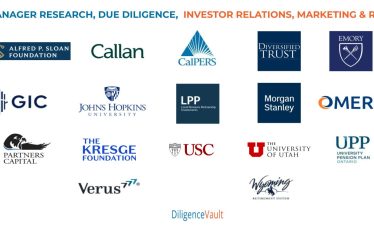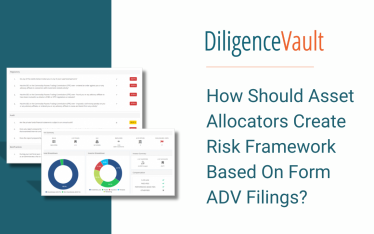Private investing has come a long way from the famed LBO story associated with mega deals and the relationships that make these deals happen. As the world goes increasingly digital, ever wonder what would happen when data takes the front seat along with relationships in private markets investing? How does data influence the way investors in private markets identify and manage portfolio risks:
- Most LPs excel at traditional diligence which focuses on inherent structural risks of lack of transparency, valuation, and illiquidity
- Successful LP differentiates with focus on superior execution manifested by managing the contradiction between need for oversight and portfolio concentrations
- Forward thinking LP is always thinking about converting overload of lagged and unstructured information in to analyzable data sets, and incorporating results in the investment process
We selected 5 US public pension plans actively investing in private markets (totaling AUM in excess of $500bn) to understand the contradiction between concentrated bets vs. risk of oversight, and here’s what we find about average check size:

What appears on the surface to be over-diversification results in significant monitoring risk. With the data available today, it’s easy to capture large changes, but more difficult to detect patterns or a number of small changes causing a big impact. Investors are simply not equipped with the necessary analytical tools; as a result, conviction is expressed by small check sizes. The result is an attempt to diversify away oversight risk by investing in a large number of deals.
How can investors leverage technology to ensure smooth execution, and in enhancing the invest process?
- Centralize information, to ensure it is easily accessible
- Digitize investment information, to ensure it is trackable, measurable and analyzable
- Build controls within the investment, to ensure first line of defense for active oversight
The Future Is Analytical, With Some Gaps To Fill
Most of the quantitative and data-driven analytics is around top down macro analysis, or deal-driven analytics. GP level analytics are buried in documents and hard to find.

Contrary to popular thinking, private market investors have unparalleled sources of information, coming directly from the GP, their own network, public regulatory filings, and social media. The handicap is that most of this knowledge is sitting in a distributed fashion and in an unstructured format. Consequently LPs tend to gravitate towards easily quantifiable data.
How can LPs Integrate Public Datasets?
Barely scratching the surface on public regulatory filings, here’s what we learn about PE micro-structure:
Validate views on market dominance and fragmentation: Not surprising that 19% of the firms manage 84% of gross assets.

It’s a complex micro-structure for investors to asses. Single fund firms comprise 27% of the universe, firms with 2-9 funds are the majority at 56%, firms with 10-50 funds: 16%, and 50+ funds are just 1%.
Be Surprised by Limited Alignment of Interests: Given the risks of information asymmetry, illiquidity, emphasis should be on alignment among shareholders, clients and management so that investors’ interests are well protected. However, the data tells us that there is not 100% skin in the game. And surprisingly 22% of fund structures manage external capital with no skin in the game at all.

**The Industry Remains Opaque: ** Unrealized valuation is the biggest risk. Independence in process is above all the most critical issue in sidestepping obvious conflicts and growing a strong business franchise that can deliver consistent returns. However, the data show that there’s room for greater LP activism.

There are No Multi-Strategy Private Equity Managers: Below Venn diagram shows what % of the firms are active in PE, RE and VC, and where there are overlaps. What we see is that very few have the infrastructure to dabble in multiple sectors and any style drift should be a flag.

Charting a New Way Forward
Given the above, LPs who can identify best practices, create checklist to benchmark against these, and measure patterns will be equipped to analyze distinctive elements about the GPs and have influence on internal controls. This requires introduction of ex-ante analytics in addition to ex-post metrics (Capital Called %, Distribution %, Multiples and IRR, Vintage).
Historically, vintage is an ex-post data point and almost always a function of market cycles. The cycle and the vintage prescribe valuations and are strong predictors of return potential. How can LP be empowered to ask a critical question: How do I select the best fund within a given vintage? What data sets help in evaluating conviction enablers, building anomaly detection layers, and an early warning system for failures?
As data becomes democratized, structured and more easily available, information asymmetry will no longer be a source of alpha. In fact, investors who can leverage data and technology to answer what happened? (ex-post timeline), and why it happened? (ex-post patterns), and then what could happen? (ex-ante predicting), and what can be done to achieve the strongest investment outcomes? (ex-ante decision analytics) will be the next leaders in getting critical questions answered.



